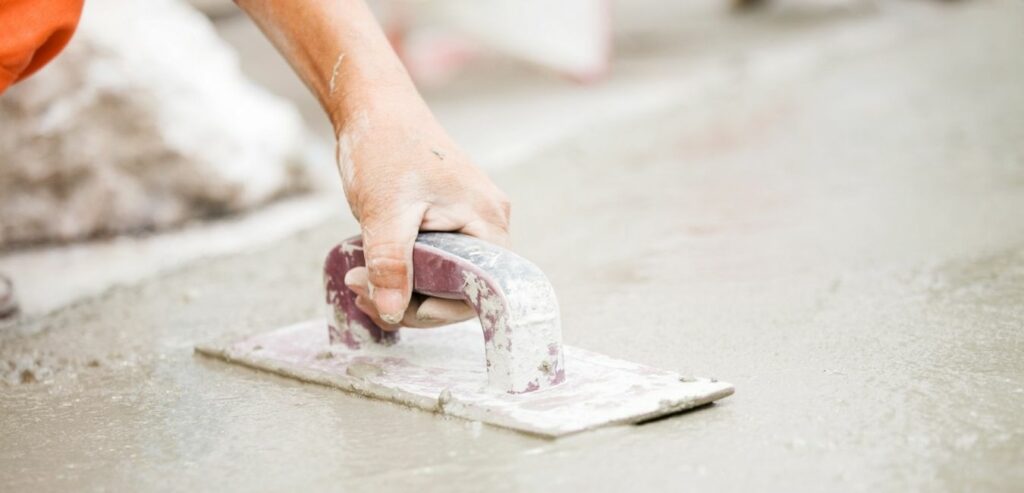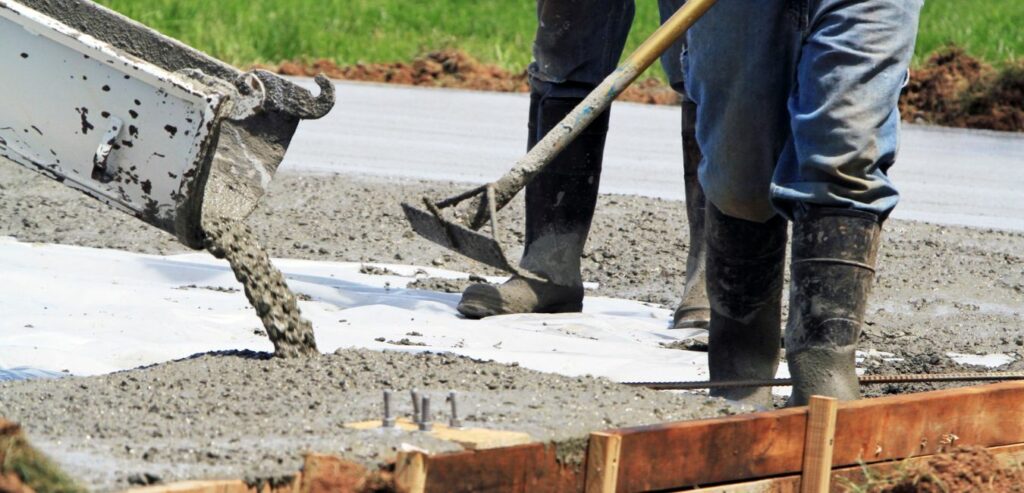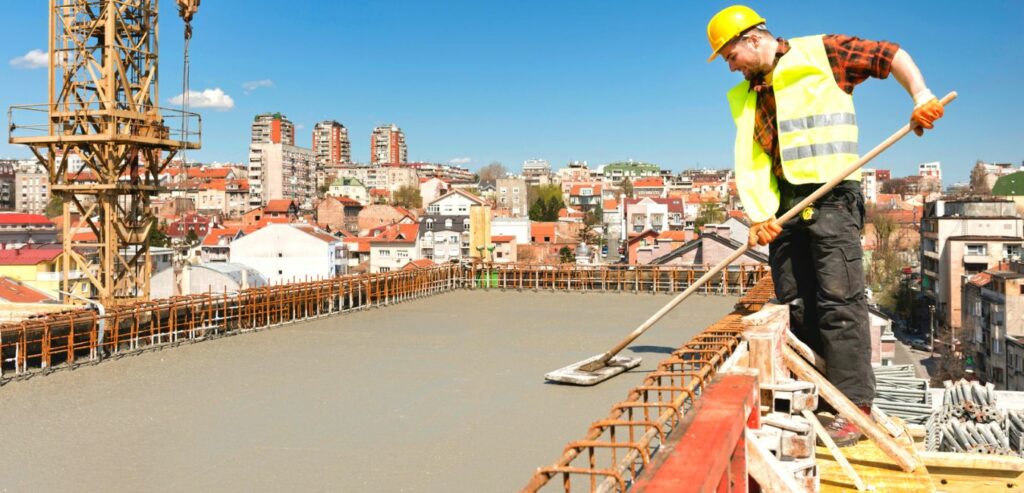After fresh placement, concrete is delicate and easily ruined. Waiting for concrete to dry and cure can test your patience, but it’s vital to remember that the ultimate goal is not only how fast the concrete dries and cures but the quality of concrete.
Allowing foot traffic and heavy machinery on concrete before drying and curing compromises a concrete slab’s integrity. This article will discuss the drying and curing of concrete and why it is essential for your concrete works.
Table of Contents
Drying vs. curing
These terms are used interchangeably, but this shouldn’t be the case. Concrete drying is the process of dehydration that allows concrete to reach the appropriate moisture conditions necessary for the intended use.
On the other hand, curing is the hydration process that provides adequate moisture, time, and temperature to allow concrete to attain the desired properties for the intended use.
Many customers worry about concrete drying but should instead worry about concrete curing. You can have perfectly dry concrete that’s improperly cured, which can be detrimental to your project. When concrete loses moisture too fast, it can also inhibit concrete curing.
How long does concrete take to dry?
On average, concrete takes 24 to 48 hours for the initial set and is dry enough for people to walk on it.
How does concrete dry?
Concrete dries through evaporation. The water inside the concrete evaporates from the concrete surface. As this water evaporates, more water from deep within the concrete moves through capillaries to the surface to replace the evaporated water.
The evaporation process continues if the surrounding air can hold more water until the concrete dries.

How long does concrete take to cure?
The concrete curing process is continuous, and it takes about 28 days for concrete to reach its adequate strength. However, you can use the concrete sooner than 28 days. After seven days, the concrete cures partially, and you can allow traffic from vehicles and light machinery, but after 28 days, the concrete cures fully.
How does concrete cure?
Concrete curing is the hardening process of concrete. Primarily, concrete contains water, cement, and aggregates. When these ingredients mix, they spark a chemical reaction that causes them to bind together. During this process, the concrete becomes porous, and the water slowly evaporates through concrete capillaries.
However, for concrete to cure effectively, there has to be moisture present, and you will need to keep adding water to the concrete to allow it to set correctly. You can add water to the surface of the concrete to replace the evaporating water or seal the concrete to stop water from evaporating from the concrete in the first place.
What affects the drying and curing process?
Curing increases the compressive strength, improves concrete’s microstructure, and enhances the serviceability of concrete. However, some factors affect the curing of concrete. These include:
- Temperature: In hot conditions, water evaporates faster, which means concrete cures more quickly. As the temperature of the concrete cools down, hydration slows down. On the other hand, hot temperature causes a problem for the concrete, as the hydration process produces heat. This can quickly lead to temperature differentials that lead to cracking in concrete. Ideally, the right temperature for curing concrete is between 50 and 85F.
- Moisture content: The interaction of water with cement facilitates the curing process. If there is less water, concrete will cure faster. This means that the concrete will not attain its full strength as it makes fewer bonds. However, the strength of concrete depends upon the growth of these bonds in the concrete matrix. If there is too much water, the curing process will take longer, but the concrete will attain the desired strength.
- Concrete mix design: The concrete mix design involves preparing a mix of ingredients that help concrete achieve its desired durability and strength. Adding an accelerant to the concrete mix will hasten the setting time, but your concrete may not be as strong compared to concrete that cures normally. The ratio of water and cement also affects how fast the concrete sets.
- Type of curing method: Different curing methods affect the drying and curing of concrete. Some curing methods include the water cure, water retaining method, waterproof paper, and chemical membranes.
The curing method affects water retention in the concrete matrix, which affects the hydration process. Using waterproof paper is particularly important in windy areas, as too much wind speeds up hydration and can lead to concrete cracking and poor concrete strength.
Wet curing also ensures that the concrete surface is constantly hydrated. It involves using wet blankets and placing them on the concrete surface. These blankets are often sprayed with water to trap the moisture inside.

How to speed up the drying and curing process
You can do several things to speed up the concrete drying process. You should use the right amount of water in the concrete mix. Too much water means there will be more water that needs to evaporate, translating to a longer drying time.
You can also reduce the drying time by using more cement in the concrete mix. However, this could become a construction risk as the concrete will be prone to cracking due to shrinkage.
It is also best to avoid sealing and curing agents, as they can inhibit evaporation from the concrete surface, thus increasing the drying time. Also, avoid over-trowelling the concrete surface, as you can block some of the pores in the concrete and increase the drying time.
You can also use dehumidifiers to remove moisture from the air, which also improves the overall drying process of the concrete.
Summary
Concrete curing is a crucial process, and the quantity, concrete strength, and application of your concrete affect the curing method and how long it takes. It is best to seek advice from reputable concrete suppliers for the best results.
The proper curing of concrete affects the strength, durability, and water tightness of concrete. Concrete should be continuously damp for the first seven days for satisfactory curing. The concrete curing and drying times are vital factors affecting the scheduling of construction projects, and shortening this time leads to significant savings on construction costs.

